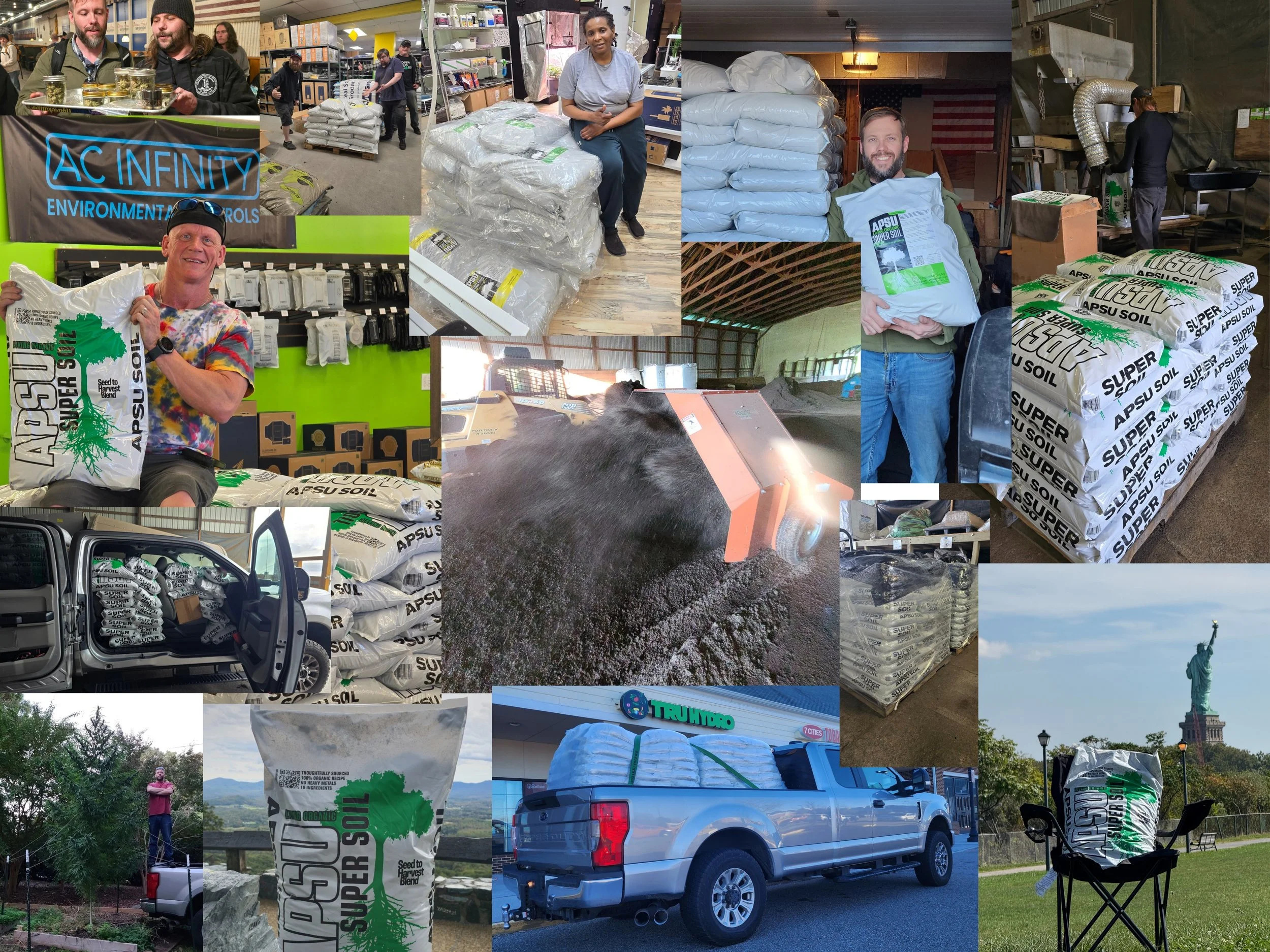
Find Your Soil
Type your plant or animal into the search, and we’ll show you the right soil.
Integrated Pest Management (IPM)
Integrated Pest Management (IPM) is a science-based, systems-oriented approach to pest control that prioritizes prevention, monitoring, biological balance, and targeted intervention. Rather than relying on routine pesticide applications, IPM integrates biological, cultural, mechanical, and chemical tools to manage pest populations below damaging thresholds while preserving environmental integrity and long-term system stability.
IPM is widely used in professional agriculture, greenhouses, indoor growing environments, and nursery production where plant health, soil biology, and resistance management are critical.
Foundational Principles of IPM
1. Monitoring & Accurate Identification
Effective pest management begins with consistent observation and correct identification. Many pests require species-specific controls, and misidentification often leads to ineffective treatment or unnecessary disruption.
Common pests in intensive growing systems include:
Spider mites: Tetranychus urticae, Tetranychus cinnabarinus
Russet mites: Aculops cannabicola, Aculops lycopersici
Broad mites: Polyphagotarsonemus latus
Thrips: Frankliniella occidentalis, Thrips tabaci
Aphids: Myzus persicae, Aphis gossypii
Whiteflies: Trialeurodes vaporariorum, Bemisia tabaci
Fungus gnats: Bradysia spp.
Root aphids: Phylloxera spp., Pemphigus spp.
Caterpillars / budworms: Heliothis spp., Spodoptera spp.
Mealybugs: Pseudococcus spp.
Scale insects: Coccus spp., Diaspis spp.
Inspection should include leaf surfaces (top and underside), petioles, nodes, new growth, and the soil surface. Hand lenses (10–30×) or digital microscopes are strongly recommended.
2. Preventive Cultural Controls
Healthy, unstressed plants are naturally more resistant to pest pressure. Preventive practices form the backbone of IPM and reduce the need for intervention.
Key practices include:
Strict sanitation and debris removal
Proper spacing and canopy airflow
Controlled irrigation to avoid saturated media
Crop rotation or fallow periods
Quarantine of incoming plants (7–14 days minimum)
3. Action Thresholds
IPM does not aim for complete pest eradication. Instead, it focuses on maintaining populations below levels that cause economic or physiological damage. Thresholds vary by pest species, plant growth stage, and environmental conditions.
Daily IPM Tasks
Visual Inspection
Inspect leaves, stems, nodes, and soil surface
Watch for stippling, chlorosis, curling, webbing, honeydew, frass, or distorted growth
Environmental Monitoring
Maintain conditions that discourage pest reproduction:
Temperature: ~68–77°F (20–25°C)
Relative Humidity: Adjust by growth stage; prolonged high RH favors mites, thrips, and pathogens
Ensure constant air movement and avoid stagnant microclimates
Sticky Traps
Yellow traps: fungus gnats, aphids, whiteflies
Blue traps: thrips
Use traps to track trends, not just presence
Sanitation
Remove dead plant material daily
Sanitize tools and surfaces using isopropyl alcohol (70%) or appropriate disinfectants
Weekly IPM Tasks
Detailed Plant Inspection
Use magnification to inspect new growth and leaf undersides
Pay close attention to mites (Tetranychus, Aculops, Polyphagotarsonemus)
Root Zone & Media Monitoring
Avoid overwatering to limit Bradysia spp. reproduction
Monitor for root stress or unexplained vigor loss
Biological & Preventive Controls
Common biological tools include:
Mycoinsecticides
Beauveria bassiana
Metarhizium anisopliae
Bacterial Controls
Bacillus thuringiensis israelensis (Bti) for fungus gnat larvae
Bacillus thuringiensis kurstaki (Btk) for caterpillars (early stages)
Beneficial Insects
Phytoseiulus persimilis (spider mites)
Amblyseius swirskii (thrips, whiteflies)
Amblyseius cucumeris (thrips)
Encarsia formosa (whiteflies)
Environmental Adjustments
Reduce humidity as canopy density increases
Increase airflow to eliminate pest-friendly microclimates
Monthly IPM Tasks
Soil & Root Zone Biological Health
Apply beneficial nematodes:
Steinernema feltiae
Heterorhabditis bacteriophora
Reinoculate with beneficial microbes to support plant immunity
Deep Sanitation
Clean floors, benches, fans, ducting, and containers
Eliminate standing water and organic residue
Canopy Management
Prune excess or lower growth to improve airflow
Remove infested tissue immediately and discard off-site
Rotation of Control Methods
Rotate modes of action to prevent resistance:
Oils (early growth only)
Insecticidal soaps
Biologicals
Spinosad (Saccharopolyspora spinosa)
IPM During Flowering or Reproductive Stages
As plants enter flowering or fruiting, IPM shifts toward non-residual, non-disruptive methods to protect crop quality.
Daily Focus
Inspect flowers, developing fruit, and surrounding foliage
Maintain RH at 40–50% to suppress Botrytis cinerea and Erysiphe spp.
Ensure strong airflow through dense growth
Weekly Focus
Avoid full-canopy sprays
Use spot treatments only:
Manual removal
Water sprays
Diatomaceous earth (soil surface only)
Biological Support
Continue beneficial insect releases:
Phytoseiulus persimilis
Amblyseius swirskii
Chrysoperla rufilabris (green lacewing larvae)
Soil Pest Control
Bti for larvae
Beneficial nematodes for root pests
Targeted Pest Strategies
Spider mites (Tetranychus spp.): predatory mites, humidity control, biological rotation
Thrips (Frankliniella occidentalis): predatory mites, blue traps, Beauveria bassiana
Aphids (Myzus persicae): Hippodamia convergens, lacewings, spot treatments
Fungus gnats (Bradysia spp.): Bti, nematodes, improved drainage
Caterpillars (Heliothis, Spodoptera): Btk (early stages), hand removal
Best Practices
Avoid oil-based sprays once flowers or fruit are present
Quarantine all incoming plants
Maintain detailed IPM logs
Prioritize biological balance over eradication
APSU Soil Pest Solutions
For pest-specific tools, biological controls, and system-compatible treatments, visit apsusoil.com/pest. This resource outlines APSU Soil–approved pest solutions designed to integrate seamlessly with IPM programs and living soil systems while minimizing disruption to soil biology.
IPM Philosophy
Healthy plants grown in balanced environments require fewer interventions.
IPM succeeds when prevention, biology, and observation work together.


